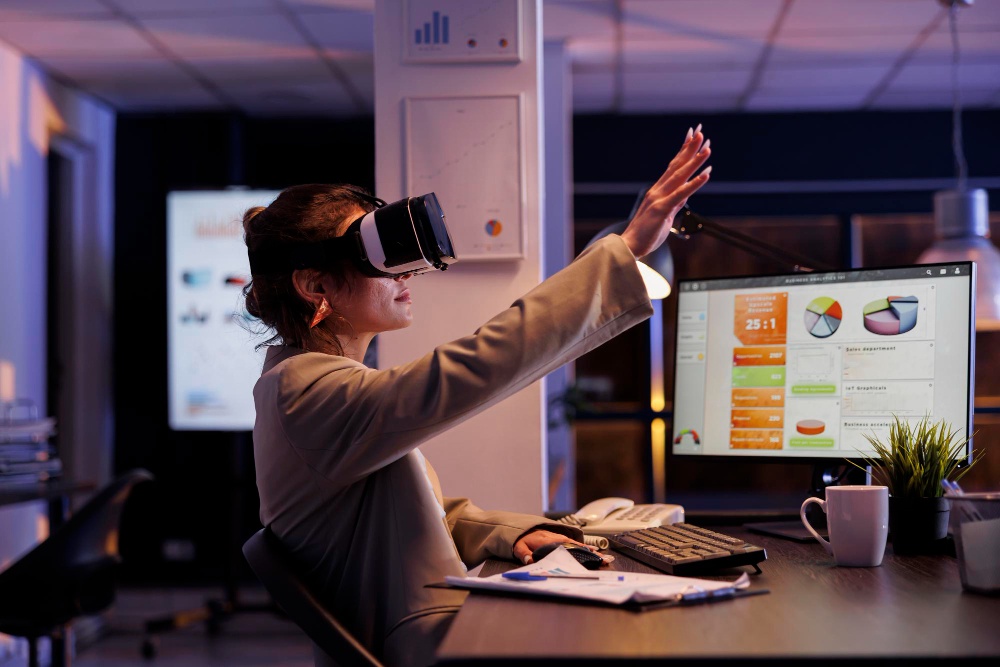In the ever-expanding landscape of technological advancement, Virtual Reality (VR) stands as a beacon of innovation, offering immersive experiences that transcend conventional boundaries. Within this realm, VR development companies play a pivotal role, meticulously crafting experiences that transport users to alternate realities and reshape the way we interact with digital content. From entertainment to education, healthcare to enterprise, the expertise of VR development company shapes the future of immersive technology. In this article, we embark on a journey through the intricacies of the VR development process, exploring the path from conceptualization to realization, and shedding light on the indispensable role of these companies in bringing VR experiences to life.
I. Conceptualization and Ideation
- Define Project Goals: Clearly outline the objectives and target audience for the VR experience.
- Brainstorming Sessions: Foster creativity and innovation through collaborative idea generation sessions.
- Market Research: Analyze market trends, competitor offerings, and user preferences to inform concept development.
- Storyboarding: Visualize the user journey and narrative flow to establish a cohesive storyline for the VR experience.
II. Planning and Pre-production
- Technical Feasibility Assessment: Evaluate the technical requirements and constraints of the proposed VR project.
- Resource Allocation: Determine the necessary hardware, software, and human resources for development.
- Prototyping: Create initial prototypes to test concepts and gather feedback from stakeholders.
- Scriptwriting: Develop a detailed script outlining dialogue, interactions, and key events within the VR experience.
III. Design and Development
- 3D Asset Creation: Model and animate virtual environments, characters, and objects using specialized software.
- User Interface (UI) Design: Design intuitive interfaces and navigation systems to enhance user interaction and engagement.
- Programming: Implement functionality and interactivity using programming languages such as C#, C++, or JavaScript.
- Integration: Seamlessly integrate various components, including audio, visuals, and haptic feedback, to create a cohesive VR experience.
IV. Testing and Quality Assurance
- Alpha Testing: Conduct internal testing to identify and address bugs, glitches, and usability issues.
- Beta Testing: Distribute the VR experience to a select group of users for real-world testing and feedback.
- Performance Optimization: Optimize performance to ensure smooth and immersive VR experiences across different hardware configurations.
- Quality Assurance: Thoroughly test the VR experience for functionality, usability, and compatibility across multiple platforms and devices.
V. Deployment and Distribution
- Platform Selection: Choose the appropriate VR platforms, such as Oculus, HTC Vive, or PlayStation VR, for deployment.
- Submission and Approval: Prepare and submit the VR experience to respective app stores or distribution platforms for approval.
- Marketing and Promotion: Develop a comprehensive marketing strategy to generate awareness and drive user adoption of the VR experience.
- Post-launch Support: Provide ongoing support and updates to address user feedback, fix bugs, and introduce new features.
The journey from concept to reality in VR development is a multifaceted process that requires meticulous planning, creativity, and technical expertise. By following a structured approach encompassing conceptualization, planning, design, development, testing, and deployment, VR development companies can bring immersive experiences to life that captivate audiences and push the boundaries of innovation. As technology continues to evolve, the possibilities for VR development are endless, promising exciting opportunities for future exploration and advancement.


No comments yet